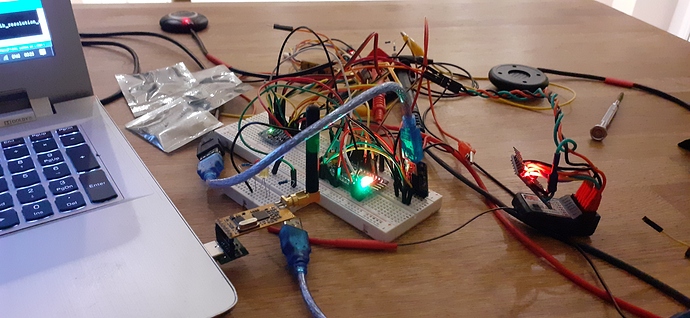OK but you know where I am in case you need anything 
Maybe your electronic expertise now and then!
I loved electronics since I was a kid. Taking things apart. Made some good clever stuff.
Got a degree in it. But I’m still a hobbyist who bodges it just to get it working.
Maths and why you should boot strap a tranny instead of the normal way? Not sure.
Good solder joints? Iffy!

This was the robot skeleton. I couldn’t find an easy way into one of the servos to change the direction on one of them so I had to print it this way.
I printed 2 self tap holes for the fc at m3. With a lipo mount on top.

Steve. I know how to swap wires on an engine. What I don’t want to try is prize a pcb and mechanism from a plaky housing. Somethings gunna snap. I’m scared Steve!!!
I modded one last weekend to give a total of 180deg. movement.
Easier than it looks 
…two actually, practised on a cheap, doesn’t matter if I fuck-it-up, one first 

I see this as an absolute win!!!
I’ll try increasing the Pids
With the inherent reliability of today’s electrickery bits it’s more common for faults due to dry or weak solder joints. Yesterday I was having an issue whereby the OSD on my Xugong was reporting a current draw of 15Amp and upward when disarmed. Viewing the PDB under my microscope I found a crack in the solder joint of the surface mounted shunt resistor on the input to the current measuring cct. A quick poke with the syringe of low temp solder paste and brute force with the heat gun its good as new.
Nidge.
This isn’t going to work. I’m using a tricopter servo setup. But it’s responding to the speed of the angle error, not the actual angle of error. I’ll try an Inav wing setup…
Hello all.
Hope you don’t mind me jumping in but I noticed the title of the thread and have a tale of slightly expensive woe to share.
So I’m a new pilot with little flying experience.
I played with various balsa wood kits and even crashed a (never to take to the air again) Christmas present “control line” plastic Hurricane MK11 as a kid.
I’ve always had an interest, consequently I’ve enjoyed many YouTube vids and read reams of info on everything RC.
I re-entered the hobby just as dji amazed everyone with their shiny new digital fpv platform.
Why would anyone not go digital!
I’ll just buy a small quad with a digital dji camera, some dji fpv goggles, a radio, (lots of extra stuff I hadn’t thought of), and I’ll be away!
I can lean to fly my “small” digital quad indoors, just like the bloke on YouTube flew his around the house. I’ve done my research right…
So we’re way too many months on, and I’m drawn back to the title of the thread.
My mistake is on the bench. The iFlight Titan DC2
I’ve since discovered:
3 or 4S isn’t for indoors
50 gram air units are not for 2 1/4 inch quads
Drilling through an arm to mount a 40A ESC board in order to power said 50g air unit, is probably not such a great design feature. (I haven’t tested this and it’s not awful as there’s still some “meat” around the mounting holes, however it points to the only available option iFlight had in order to cram the only available board to power the only available digital system at the time into a small quad).
182 grams dry weight makes the quad underpowered even with a 4s.
Banging on bigger motors would have worked great if they didn’t weigh almost 10g each.
And some other stuff…
The good news is my DC2 now has a Vista, and with some stripping away of unneeded 3d printed parts I’m going to end up around the 154g mark. Another 12g with the ducts off but I’m going to swap the ducts to allow it to run 2 1/2in props rather than the 2 1/4in the current ducts allow.
I hope with the 30g or so weight reduction and increased thrust from bigger props, I’ll have a quad that preforms well.
Oh… I bought a Tinyhawk 2 and an analogue adaptor (in the post) for my amazing digital dji goggles.
A quad you can really fly in the house!
What’s the vista like compared to the air unit?
Depends on the camera paired up with vista.
The original camera that came with the air unit, and still the best, weighs around 10g. The vista unit is 19g, 3.5g for the single antenna. There are now two lighter camera options available. Both made by the vista manufacture Caddx. Called the Nebula, around 6g but pretty crap compared to the original one. Definitely not worth the few grams saving.
This is my self-built Quadcopter, It’s an F450 frame with 1000kv motors, 8x4.5 inch props, 30A ESC, Telemetry, and a self-built flight controller from an STM32 Bluepill development board
Nice  has it flown yet ?
has it flown yet ?
Cheers
Steve 
Hardcore modder badge right there!
He’ll being waiting years for that one 


Ask and you don’t get






